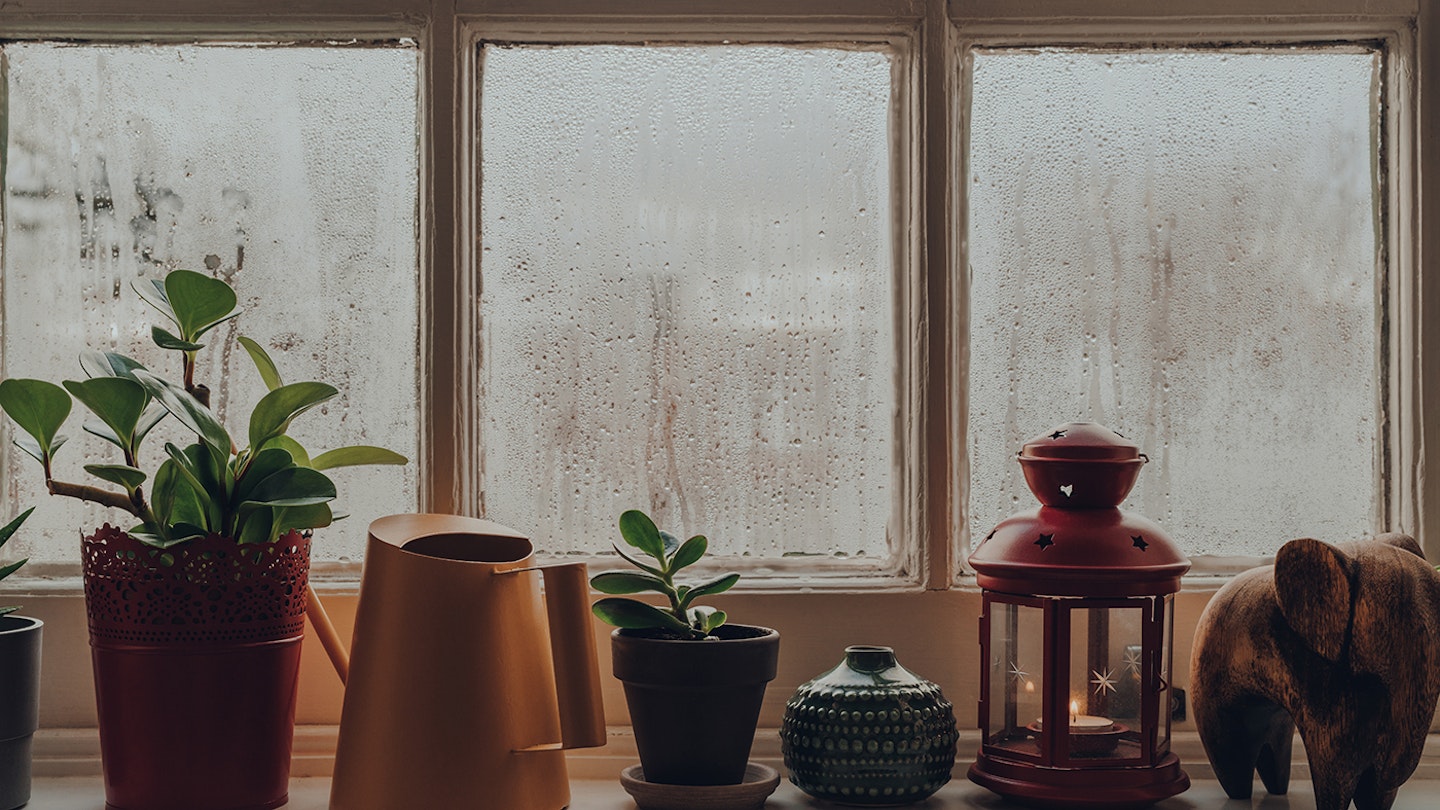Condensation is created by excess moisture in the air that forms on cold surfaces. As the seasons change you may see condensation on the outside of your windows, however if you're frequently getting condensation on windows internally this can lead to mould, which, as well as leading to musty smells in the house, can damage furniture and affect your health.
What causes condensation on windows?
Condensation on windows is quite a normal thing to see, after all it's very rare that the internal and external temperatures are exactly the same. Plus there are lots of sources of moisture that can lead to condensation on your windows. The biggest causes of excess moisture that causes condensation on insides of windows are:
• Cooking, boiling pans and kettles
• Showers and hot taps
• Washing machines and tumble dryers
• Drying clothing on radiators or indoor airers
• Large houseplants
• Wet logs stored for wood burners
• Unfound water leaks in cavities or under floors
• Rising damp in basements and ground-level buildings
Why is condensation a problem?
Leaving condensation on windows without taking steps to prevent it could lead to issues such as mould. Not only is black mould unsightly, it damages surfaces it forms on, such as walls and soft furnishings.
Mould in your home also puts you at risk of developing respiratory problems, allergies and can even have a negative impact on your immune system.
10 ways to stop condensation on windows
1 Close bathroom and kitchen doors
Bathrooms and kitchens are the worst culprits for condensation. When cooking food, boiling the kettle, or taking a shower, ensure that your kitchen or bathroom door is kept closed to prevent the moisture in the air from going into colder rooms which will cause condensation to form if it touches a cold surface.
2 Use extractor fans
Ensure you're using extractor fans in bathrooms and the kitchen so you're removing as much moisture as possible. Using a pan lid when cooking will also help to reduce moisture being created.
3 Dry clothes outdoors
Where possible, try to dry your clothes outdoors to prevent excess moisture from building up in your property. If you are unable to dry your clothes outdoor then there are ways to dry your clothes indoors such as keeping them in a bathroom with the door closed and windows open until the clothes are fully dry.
4 Keep large furniture away from external walls
Make sure that your furniture is at least 50mm away from the surrounding walls so that air can circulate around the property. Try to ensure that your wardrobes are placed against internal walls in your bedroom which will be less cold than external walls and less likely to cause damp and mould problems.
5 Ventilate your house
Get in the habit of opening up windows when weather outside is warmer, or for internal spaces where you can’t open the window, a dehumidifier is an option.
6 Heating your house
Ensuring an adequate amount of heating in your property will improve the internal temperature of surfaces in the house and reduce the likelihood of condensation.
7 Don't forget those unoccupied rooms
Condensation can become a big issue in rooms you don’t use very often if you turn the heating off in that room and shut the door. Consider keeping the heating on in that room, perhaps installing thermostatic radiator valves so you can control the temperature separately to the rest of the house.
8 Don't overfill wardrobes or kitchen cupboards
A lack of ventilation and air moisture trapped in warm overfilled cupboards can become a breeding ground for mould as the air is not able to circulate freely inside. You might notice a musty smell or find that clothes have a damp feeling to them which is a sure sign that the cupboard is overfilled.
9 Double glazing, loft insulation and draft proofing
All of these will help to reduce the amount of heat that is lost from a property. Installing insulation will help to keep the temperature of the surfaces inside your property at a higher level.
10 Invest in moisture-loving house plants
While some houseplants can contribute to condensation, there are certain plants that love humidity and will absorb moisture from the air – orchids, bromeliads and tillandsia are all great for this.
Condensation inside double glazing
If you have condensation between your window panes, this is a sign that the window seal has failed. In this instance the whole pane should be replaced. This can be a costly repair, so check if your window is still under warranty. Alternatively the window repair company may be able to 'defog' the glass, so it's worth asking if this is an option.
